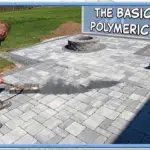While the roof over our heads often fades into the background of our daily lives, it represents one of the most fundamental yet overlooked elements of home design and function. Beyond its outward appearance, a roof is a key line of defense against the elements, shielding the interior living space from rain, wind, heat, and cold. Over time, exposure to these environmental stressors takes its toll, so choosing the right roofing material and system is important.
Not only does the choice impact curb appeal and first impressions, but selecting a long-lasting, durable solution can help preserve a home’s integrity and value for decades. This post will explore various contemporary roofing options, considering both form and function, as we discuss aesthetics, material properties, installation techniques, maintenance needs, and more.

The Bigger Picture: The Role of Quality Roofing
A high-quality roof is not just a cap on top of a building; it’s a crucial component that affects the home’s overall health, safety, and sustainability. Therefore, understanding the importance of quality roofing is essential for homeowners, architects, and builders alike.
Enhances Home Value
Quality roofing enhances the home’s value. A well-maintained roof in good condition often suggests that the rest of the house is similarly well-kept, making it more appealing to potential buyers.
Energy Efficiency
Quality roofs are designed for optimal energy efficiency, which can lower heating and cooling costs. They reflect more sunlight and absorb less heat, leading to less demand for the summer air conditioning system.
Durability and Longevity
Quality roofing materials are built to withstand harsh weather conditions, ensuring that the roof lasts for decades with minimal maintenance.
Safety
Quality roofs are also safer. They are built with materials that are resistant to fire, wind, and other potential hazards.
Aesthetic Appeal
Finally, quality roofs add aesthetic appeal to a home. With a variety of styles, colors, and materials available, a high-quality roof can significantly enhance a home’s curb appeal.
Resilience to Extreme Conditions
Quality roofs are constructed with materials and techniques that offer resilience against extreme conditions. Whether it’s heavy snowfall, severe hail storms, or high winds, a well-built roof can withstand these challenging weather phenomena, minimizing the risk of damage to the home.
Like Us on Facebook!
Noise Reduction
Another advantage of quality roofing is its ability to reduce noise pollution. Certain roofing materials and installation methods can provide excellent sound insulation, serving as a barrier against external noise and creating a quieter, more comfortable living environment within the home.
Subscribe Us on YouTube!
Environmentally Friendly
Lastly, many quality roofing options are environmentally friendly. They are often made from recycled materials and can be recycled again at the end of their lifespan. Furthermore, some roofs are designed to support photovoltaic systems or green roofs, contributing to a more sustainable and energy-efficient home.
Contemporary Roofing Options: Materials and Styles
There are many contemporary roofing materials on the market today, each with its own unique properties and benefits. Let’s take a closer look at some of the most popular options:
Asphalt Shingles
Asphalt shingles are one of the most widely used roofing materials in North America. They come in various styles and colors, making them an attractive option for homeowners. They are also relatively affordable and easy to install, making them a popular choice for builders and contractors. However, asphalt shingles have a shorter lifespan compared to other roofing materials and may not be the best choice for areas with extreme weather conditions.
Metal Roofing
Metal roofing has become increasingly popular in recent years due to its durability, low maintenance, and energy efficiency. It is available in a variety of styles, including standing seam, corrugated panels, and shingles resembling other materials such as slate or wood.
Metal roofs can also withstand extreme weather conditions and have a long lifespan compared to traditional roofing materials. However, metal roofing can be more expensive than other options and may require professional installation.
Clay and Concrete Tiles
Clay and concrete tiles are popular for their aesthetic appeal, durability, and energy efficiency. They come in a variety of colors and styles, adding a touch of elegance to any home. However, they are heavier than other roofing materials and may require additional structural support during installation. They can also be more expensive than other options, but their long lifespan may outweigh the initial cost.
Slate Roofing
Slate roofing is known for its stunning appearance and long-lasting durability. It has been used for centuries and is still a popular choice today due to its natural beauty and resistance to fire, water, and extreme weather conditions. However, slate roofing can be costly and requires expert installation due to the weight of the material.
FAQ
Which roofing material offers the best aesthetic appeal?
This is subjective as it depends on personal style and the overall design of the home. However, options like clay and concrete tiles, slate roofing, and metal roofing can all provide a stunning look to a property.
Is there a significant difference between traditional and contemporary roofing materials?
Yes, contemporary roofing materials often have advanced properties that are not available in traditional options. These include improved durability, energy efficiency, and design options.
How long does a quality roof typically last?
The lifespan of a roof depends on various factors, such as the material used, climate conditions, and maintenance. However, quality roofing materials can last anywhere from 20 to 50 years or more with proper care.
Can I install a new roof over an existing one?
It is generally not recommended to install a new roof over an existing one, as this can add extra weight and potentially compromise the structural integrity of the home. It’s best to remove the old roof before installing a new one for optimal safety and longevity.
How often should I have my roof inspected?
It’s recommended to have your roof inspected at least once a year, especially after severe weather events. Regular inspections can help identify any potential issues and allow for timely repairs, extending the lifespan of your roof. Contact a trusted roofing company, to create a maintenance plan for your roof.
Conclusion
Choosing the right roofing material and system is an important decision that can greatly impact a home’s aesthetics, durability, safety, and sustainability. Quality roofs offer numerous benefits, from enhancing property value to providing energy efficiency and resilience against extreme weather conditions. With various contemporary options, homeowners and builders can choose the best option to meet their needs and create a beautiful, long-lasting roof.


















